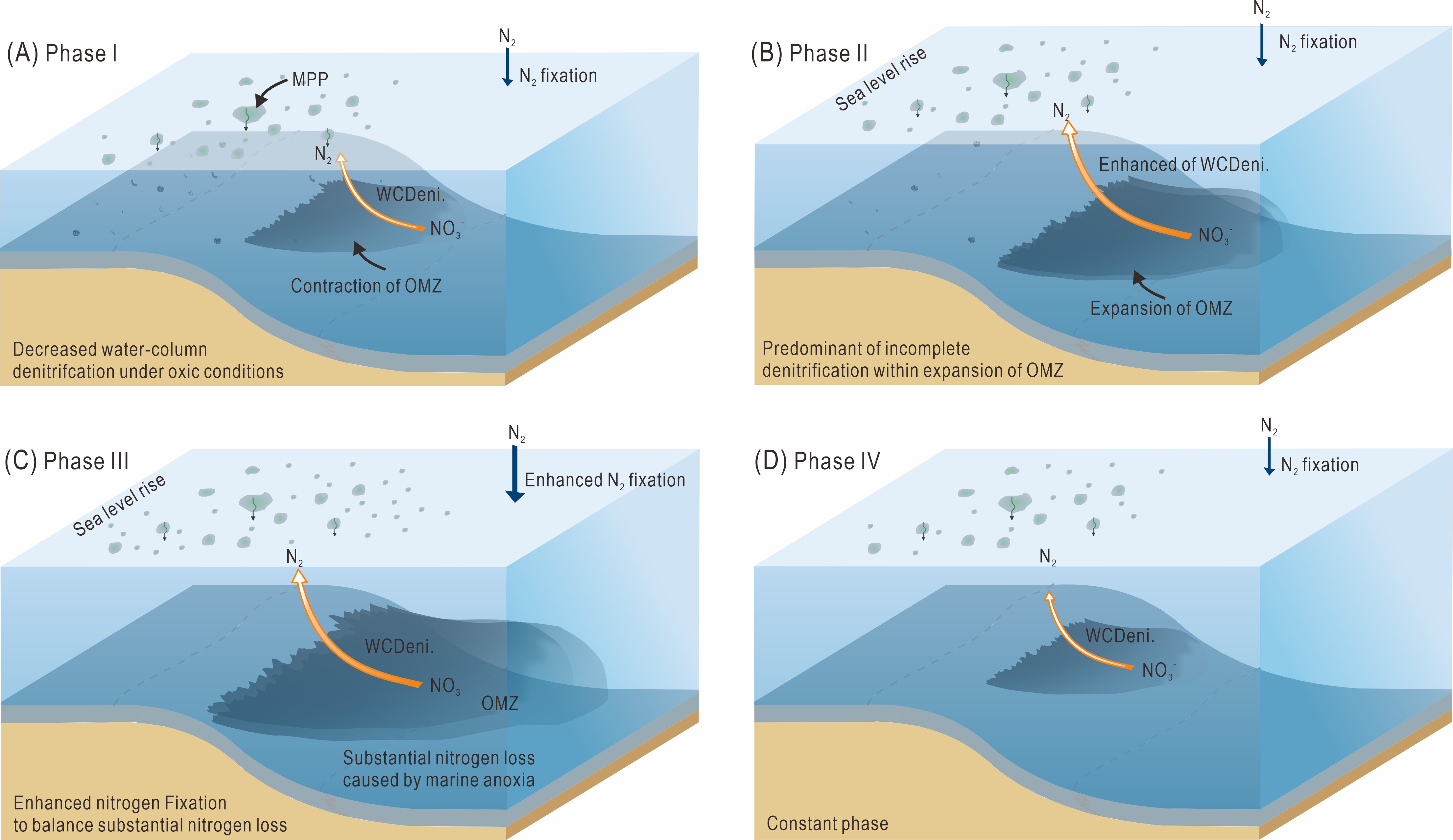The global warming event across the Kasimovian-Gzhelian boundary (KGB) in the late Pennsylvanian was marked by prominent perturbations of global biogeochemical cycles, accompanied by abrupt global warming, widespread marine anoxia, and a distinct biodiversity loss.However, the evolution of marine primary productivity and redox conditions during this short-lived warming event has not yet been explored from the perspective of marine nitrogen cycle.Nitrogen (N) plays a crucial role in regulating marine primary productivity and is highly sensitive to marine redox variations, which thus has the potential for tracking oceanic changes during climatic transitions.
The KGB warming and anoxic event thus provides a unique opportunity to investigate how the oceanic nitrogen cycle responded to transient global warming and marine anoxia under long-term icehouse conditions. Recently, a detailed study on high-resolution carbonate δ15N (Fig. 1) is conducted on the well-preserved Pennsylvanian carbonate slope- to basinal successions from the South China Block by the Ph.D. student YANG Wenli, her advisor Prof. CHEN Jitao, and their colleagues.
High-resolution sedimentary δ15N, δ13Corg, and δ13Ccarb records were reported from the Luodian Basin, South China during the KGB warming event of the LPIA. The perturbations of δ15N recorded in the three study sections indicate the changes in the nitrogen cycle and redox environments during the KGB warming event. The decrease of δ15N in phase Ⅰ indicates the decreased rate of water-column denitrification. The increase of δ15N in phase Ⅱ indicates the dominance of incomplete denitrification caused by the preliminary enhancement of oxygen depletion due to increase of SSTs. The dramatic negative δ15N excursion (by ~7‰) in phase Ⅲ immediately below the KGB coincides with the previously reported negative shift in δ13Corg, δ13Ccarb, and δ238U, and continued increase in atmospheric pCO2 and SSTs (Fig. 2) suggesting the potential linkage among these proxies. The pronounced negative shift in δ15N most likely resulted from enhanced nitrogen fixation, which was promoted by increased nitrogen loss due to denitrification during the warming-associated marine anoxia (Fig. 3). This paper demonstrates the response of the marine nitrogen cycle to the warming episodes in the icehouse climate and provides a reference case for the future study of the ocean nitrogen cycle in an interglacial climate.
The study is published in the international journal Global and Planetary Change.
The study is supported by the National Natural Science Foundation of China.
Reference: Wenli Yang, Jitao Chen*, Chaosheng Yue, Junpeng Zhang, Yuping Qi, Xiang-dong Wang, Shu-zhong Shen, Enhanced nitrogen fixation as a result of short-lived global warming and marine anoxia in the Late Pennsylvanian icehouse climate, Global and Planetary Change, 2025, 105134, https://doi.org/10.1016/j.gloplacha.2025.105134

Fig.1 Correlation of δ15N, δ13Corg, and δ13Ccarb records from the three study sections.

Fig.2 Compilation of the Kasimovian-Gzhelian boundary (KGB) warming event.

Fig.3 Conceptual diagram of the oceanic nitrogen cycle during the KGB warming event at the Luodian Basin.
Download:
